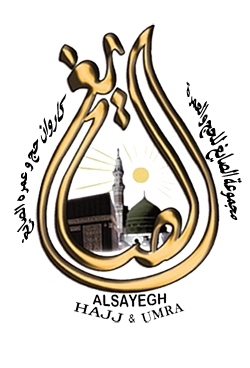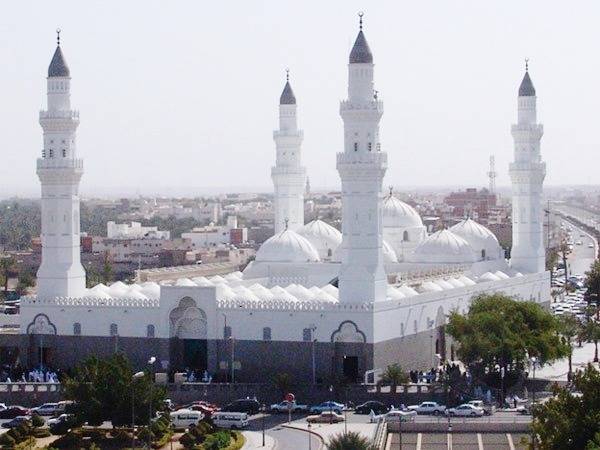History of Medina
Mosques in Medina
Al-Masjid al-Nabawī (Arabic: المسجد النبوي) is a mosque in Medina, Saudi Arabia where Prophet Muhammad (s) is buried. Second to al-Masjid al-Haram, al-Masjid al-Nabawi is the holiest mosque in the world of Islam which was built by Prophet Muhammad (s) in the first year after Hijra; it was later expanded in different eras. The houses of Prophet Muhammad (s) and Ali b. Abi Talib (a) and Lady Fatima (a) were built next to this mosque, which were later added to the mosque. Al-Masjid al-Nabawi is among the most important shrines for Muslims, which is highly revered by Shi’as.
Qubāʾ Mosque (Arabic:مسجد قباء) was the first mosque which was built by Prophet Muhammad (s). This mosque was mentioned in Qur’an 9:108-109.
Dhū l-Ḥulayfa Mosque (Arabic:مسجد ذي الحليفة) is among historical mosques of Medina located in Dhu l-Hulayfa or Abar ‘Ali region, eight km south west of al-Masjid al-Nabi on the way to Mecca.
Dhu l-Hulayfa is the Miqat (venue) of those who go for ‘Umra (‘Umrat al-Tamattu’ and al-‘Umra al-Mufrada) from Medina to Mecca. This place is also known with other names such as al-Shajara Mosque and al-Ihram Mosque. The Prophet (s) wore Ihram for ‘Umra and Hajj al-Tamattu’ in this Miqat.
Al-Jumu’a Mosque
Main article: Al-Jumu’a Mosque
The Prophet (s), when emigrating to Medina, on his way from Quba’ to Medina, said the first Jumu’a prayer in the place of Banu Salim tribe, so a mosque was built there and named as al-Jumu’a Mosque.
Al-‘Umra Mosque
Main article: Al-‘Umra Mosque
There was a mosque named al-Masjid al-‘Arafat or al-Masjid al-‘Umra placed in the direction of Qibla from Masjid al-Quba’. The name was because on the Day of ‘Arafa when the Prophet (s) was standing there, the earth became flat for him, so he could see the people in ‘Arafat.
Mosque of ‘Itban b. Malik
Mosque of ‘Itban b. Malik had been one of mosques of Quba’ region. Ibn ‘Itban who was one of Naqibs of Ansar, requested the Prophet (s) to come to his house and pray there, so he could make that place his mosque; this was because sometimes flood prevented him from going to the local mosque. The Prophet (s) went to his house, prayed there, so that place became a mosque.
Mousque of ‘Ali (a)
This mosque is located in the southern side of mosque of Fath. It is said that while Medina was surrounded by pagans during the Battle of Khandaq, this was the place that ‘Ali (a) worshiped Allah.
Fadikh Mosque
This mosque is also named Radd al-Shams mosque. In the Battle of Banu Nadir, the Prophet (s) has had a tent there and after that a mosque was built there. In some narrations from Ahl al-Bayt (a) it’s considered as a mosque which must be visited.[4]
The Seven Mosques
In northwest of Medina and in hill side of Mount Sal’, there are seven mosques built close to each other which are named as “the seven mosques”: mosque of ‘Ali (a) (Medina), mosque of Fatima (a) (Medina), mosque of Salman (Medina), mosque of Abu Dhar (Medina), Dhu l-Qiblatayn mosque, mosque of Abu Bakr (Medina), and mosque of ‘Umar (Medina).
There are other mosques in Medina, here is some of them:
- Al-Fath mosque
- Al-Ghamama mosque
- Al-Ijaba mosque(al-Mubahila mosque)
- Al-Ma’ras mosque
- Thaniyyat al-Wada’ mosque
- Al-Suqya mousque
- Umm Ibrahim mousque

 العربية
العربية فارسی
فارسی
